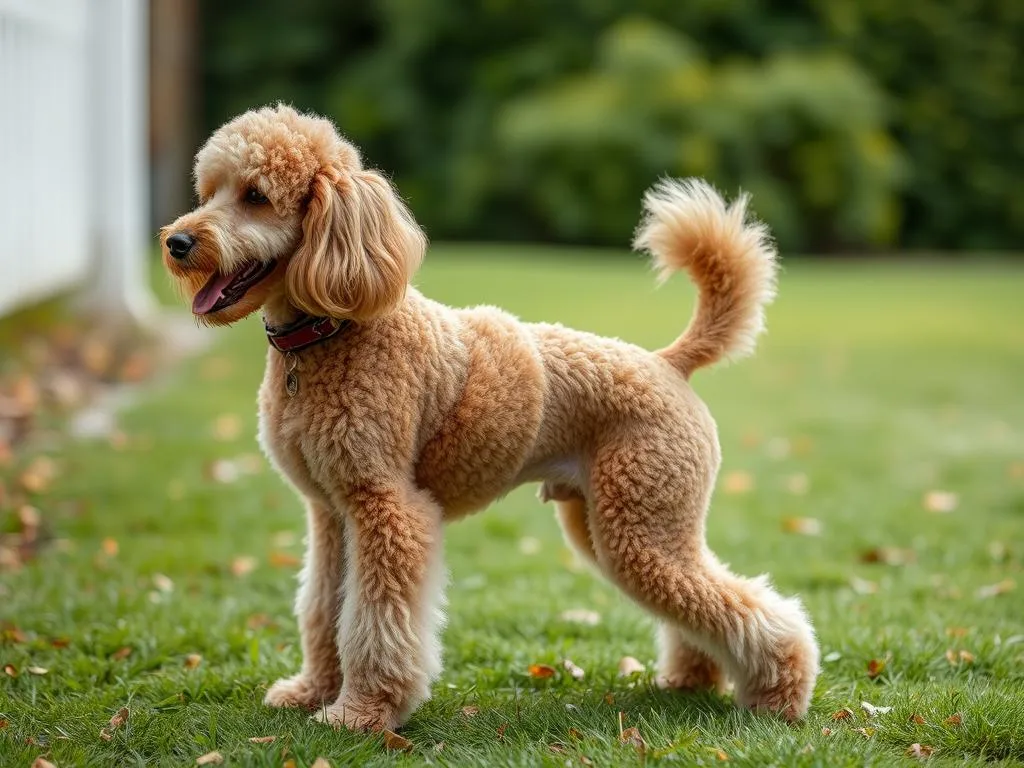
Potty training is a fundamental aspect of dog ownership that can greatly influence the bond between you and your poodle. Potty training a poodle can be both rewarding and challenging due to their unique characteristics and behaviors. Poodles, known for their intelligence and trainability, can often pick up commands quickly, but they also require a structured approach to ensure success.
Understanding the nuances of potty training a poodle will help you establish a solid foundation for your training efforts.
Understanding Poodles
Characteristics of Poodles
Poodles come in three distinct sizes: Standard, Miniature, and Toy. Each variety brings its own set of characteristics, but they all share a reputation for exceptional intelligence and eagerness to please. This makes them highly trainable, which is a significant advantage when embarking on the journey of potty training.
Common behavioral traits of poodles include:
- Sensitivity: Poodles are sensitive dogs that can respond well to positive reinforcement but may become anxious with harsh corrections.
- Playfulness: They love to engage in play, so incorporating fun into training can yield better results.
- Curiosity: Their inquisitive nature means they may explore and sniff around, which can be helpful in recognizing their need to go outside.
Why Potty Training is Essential for Poodles
Potty training is critical not only for maintaining a clean home but also for the overall health and well-being of your poodle. Poor potty habits can lead to health complications, such as urinary tract infections or behavioral issues stemming from stress and anxiety.
Moreover, a well-trained poodle contributes positively to the owner-pet relationship, fostering trust and understanding. Successful potty training can enhance your poodle’s confidence and your peace of mind.
Preparing for Potty Training
Supplies You Will Need
Before starting the potty training process, gather the necessary supplies to facilitate your training efforts:
- Potty pads or outdoor training: Decide whether you will use potty pads indoors or train your poodle to go outside. Each method has its own benefits.
- Crate for confinement: A crate can be an effective tool for potty training, providing a safe space for your poodle when you’re unable to supervise them.
- Cleaning supplies for accidents: Accidents are part of the training process. Have enzymatic cleaners on hand to eliminate odors that might attract your poodle back to the same spot.
- Treats and rewards for positive reinforcement: Choose small, high-value treats that will motivate your poodle to perform the desired behavior.
Setting Up a Schedule
Creating a consistent potty training schedule is crucial for success. Here’s what to consider:
- Consistency is key: Take your poodle out at the same times each day to establish a routine. This includes after meals, after waking up, and after playtime.
- Feeding schedule: Feed your poodle at the same times each day to regulate their bathroom needs. This predictability will make it easier for you to anticipate when they need to go out.
- Routine for bathroom breaks: Establish a routine that includes regular bathroom breaks. Poodles may need to go out every few hours, especially during the early stages of training.
The Potty Training Process
Step-by-Step Guide
Establishing a Designated Potty Area
Choose a specific spot outdoors for your poodle to relieve themselves. This area should be familiar and comfortable to them. When your poodle consistently uses the same spot, it will reinforce the behavior and help them associate that area with potty time.
Recognizing Signs Your Poodle Needs to Go
Understanding your poodle’s body language is crucial. Look for the following signs that indicate they need to go:
- Sniffing the ground
- Circling or pacing
- Whining or barking
- Going to the door
Timing is also essential. Take your poodle out after eating, playing, or waking up, as these activities often stimulate the need to go.
Introducing the Command
Introduce a verbal cue, such as “Go potty,” when you take your poodle to the designated area. Use the command consistently, and try to say it right as they begin to relieve themselves. Repeating this process will help your poodle associate the command with the action.
Positive Reinforcement Techniques
Using positive reinforcement is vital in the potty training process. When your poodle successfully goes potty in the desired area, reward them immediately with praise and a treat. Timing is crucial; rewards should come right after the behavior to reinforce the association.
Dealing with Accidents
What to Do When Accidents Happen
Accidents are a normal part of the potty training process. If your poodle has an accident indoors, it’s essential to remain calm. Avoid punishing them, as this can create fear and anxiety, which may lead to further accidents.
Here are some cleaning tips to manage accidents effectively:
- Use enzymatic cleaners to eliminate odors and discourage repeat behavior in the same spot.
- Clean up promptly to minimize the chance of your poodle returning to the area.
Adjusting the Training Approach
If your poodle is not making progress, it may be time to reassess your training methods. Consider the following:
- Patience and persistence: Potty training can take time, especially for poodles who may be sensitive to changes in their environment.
- Reinforce positive behavior: Ensure you are consistently rewarding your poodle for going potty in the right place.
Troubleshooting Common Potty Training Issues
Regression in Training
It’s common for poodles to experience regression in their potty training. This can happen for various reasons, including stress, changes in routine, or health issues.
To identify and address these issues:
- Monitor for stressors: Identify any new changes in your poodle’s environment that may be causing anxiety.
- Consult a veterinarian: If you suspect a health issue, consult your vet to rule out any underlying problems.
Outdoor vs. Indoor Potty Training
Both indoor and outdoor potty training methods have their benefits and drawbacks.
- Indoor potty training: Using potty pads can be convenient for apartment living or harsh weather conditions. However, it may lead to confusion when transitioning to outdoor training.
- Outdoor potty training: This is often preferred for long-term potty habits, but it requires access to a suitable area for your poodle to relieve themselves.
Special Considerations for Older Poodles
If you’re working with an older poodle, you may need to adapt your training approach:
- Health checks: Older dogs may have health issues affecting their potty habits, so a vet visit is essential to rule out any medical problems.
- Patience and understanding: Older poodles may require more time to adjust, so be prepared for potential challenges.
Maintenance and Long-term Strategies
Maintaining Good Potty Habits
Once your poodle is successfully potty trained, it’s vital to maintain good habits:
- Continue reinforcement: Keep rewarding your poodle for using the designated potty area to reinforce the behavior.
- Regular bathroom breaks: Ensure you provide regular bathroom breaks even after training is complete, as this will help prevent accidents.
Socializing and Potty Training
Socialization plays a critical role in potty training:
- Impact on potty habits: A well-socialized poodle is more likely to adapt to various environments and potty situations.
- Training in varied environments: Expose your poodle to different settings such as parks or homes with other pets to help them adjust to new potty situations.
Conclusion
Successfully learning how to potty train a poodle involves patience, consistency, and understanding the unique traits of this intelligent breed. By following the outlined steps and maintaining a positive approach, you’ll foster a strong bond with your poodle and create a harmonious living environment. Remember, the journey of potty training is a partnership between you and your poodle, leading to a rewarding relationship built on trust and respect.









